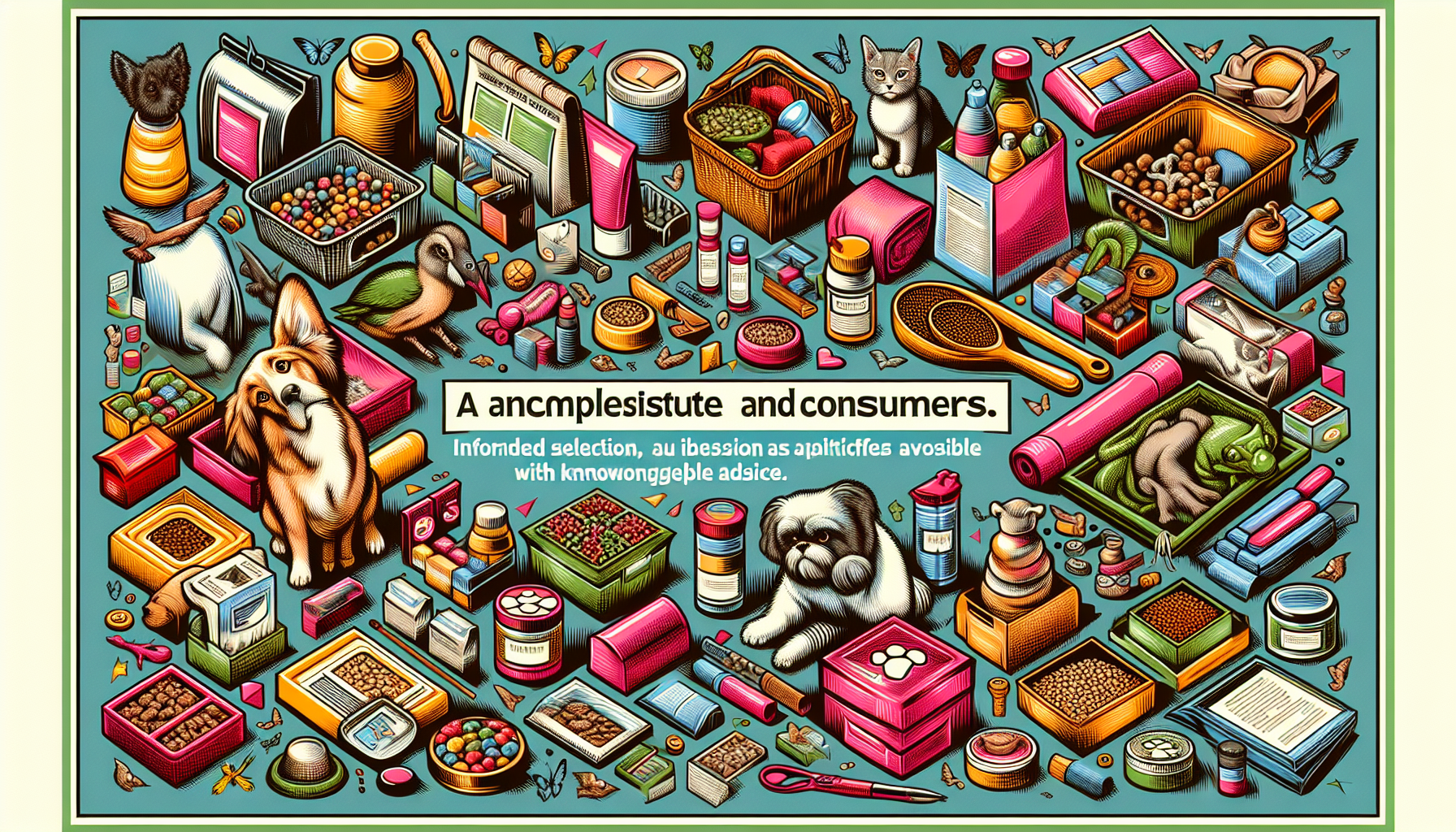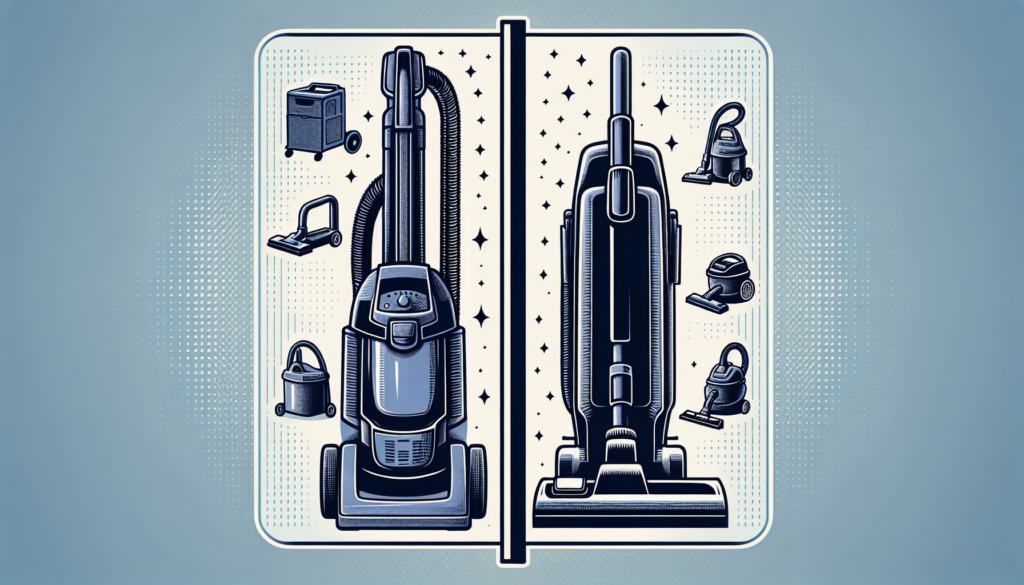Are you a pet owner looking to make smarter purchasing decisions when it comes to buying supplies for your furry friends? Look no further than BuySellCloud.com, your go-to source for expert buying guides. Whether you’re in need of food, toys, accessories, or any other pet essentials, our comprehensive product insights and tips will help you choose the perfect items. With our expert guidance, you can shop with confidence and ensure that you’re getting the best quality products for your beloved pets. So, let’s take a dive into the world of pet supplies and become savvy shoppers together!
Understanding Your Pet’s Needs

Identifying Your Pet’s Species and Breed
Before you can provide the best care for your pet, it’s important to understand their species and breed. Different animals have different needs and characteristics, and knowing this information will help you cater to their specific requirements. Whether you have a dog, cat, bird, or reptile, take the time to research their species and learn about their behaviors, physical traits, and common health issues. Additionally, if your pet is a specific breed, be sure to familiarize yourself with any unique needs or traits associated with that breed.
Considering your Pet’s Age and Size
Just like humans, pets have different needs and requirements based on their age and size. Puppies and kittens, for example, have different nutritional needs compared to adult dogs and cats. It’s essential to provide the appropriate food and care for your pet based on their life stage. Moreover, considering their size is crucial when selecting various items, such as beds and collars. Smaller pets may need more delicate or compact products, while larger ones may require more durable and spacious options.
Assessing Your Pet’s Dietary Requirements
Proper nutrition is the foundation of a healthy pet. Each species and breed may have different dietary needs, so it’s crucial to educate yourself on what is best for your pet. Factors such as age, size, and activity level can also influence the nutritional requirements. Consult with your veterinarian to determine whether your pet should be on a specific diet, such as one for weight management or grain-free options. Understanding the importance of a balanced diet and meeting your pet’s specific dietary needs is key to their overall well-being.
Recognizing Your Pet’s Activity Level
Every pet has a unique activity level, and understanding this can guide you in providing the right environment and supplies. Some pets, like certain dog breeds, require regular exercise and mental stimulation, while others, such as cats, may be more independent and have different activity preferences. Consider your pet’s energy level and provide toys and activities that cater to their needs. Whether they enjoy interactive play, chasing toys, or climbing, matching their activity level will help ensure they lead a content and healthy life.
Determining the Best Pet Food
Understanding the Ingredients List
When it comes to choosing the best pet food, understanding the ingredients list is essential. Look for high-quality protein sources, such as meat or fish, listed as the first ingredient. Avoid foods that contain artificial preservatives, colors, or flavors. Familiarize yourself with common terms, like “by-products” or “meal,” and understand what they mean for your pet’s nutrition. Remember, a good pet food should contain a balance of protein, healthy fats, and carbohydrates, along with essential vitamins and minerals.
Researching Different Brands
There are countless pet food brands available, so it’s important to do your research and find a reputable and trustworthy one. Look for brands that have a history of producing high-quality pet food and are transparent about their sourcing and manufacturing processes. Read reviews and ratings from other pet owners to get a sense of their overall satisfaction. Additionally, consider seeking recommendations from your veterinarian, who can provide valuable insights and advice based on your pet’s specific needs.
Considering Special Dietary Needs
Some pets may have special dietary needs due to allergies, sensitivities, or specific health conditions. If your pet falls into this category, it’s crucial to find a pet food that caters to their requirements. Look for specialized formulas that address these needs, whether it’s food for sensitive stomachs, limited ingredient diets, or hypoallergenic options. Consulting with your veterinarian can help you identify any dietary restrictions or modifications your pet may require.
Consulting Your Vet’s Recommendations
Your veterinarian plays a vital role in your pet’s health and can offer valuable guidance when it comes to choosing the best pet food. They can assess your pet’s individual needs and provide specific recommendations based on their health, age, and breed. Your veterinarian can also help monitor your pet’s response to the chosen food and make any necessary adjustments. Regular check-ups and open communication with your vet will ensure that your pet’s dietary needs are met.
Choosing the Right Pet Bed
Understanding Your Pet’s Sleep Habits
Just like humans, pets have their own sleep habits and preferences. Observing your pet’s sleeping patterns can help you choose the perfect bed that meets their comfort needs. Some pets may prefer a cozy corner or enclosed space, while others may enjoy stretching out on a larger bed. Consider whether your pet likes to burrow, curl up, or sprawl out, and choose a bed style that aligns with their sleeping habits.
Considering the Size and Breed of Your Pet
Proper sizing is crucial when it comes to selecting a bed for your pet. Consider their size and breed to ensure they have enough space to stretch and relax comfortably. Smaller pets may be content with a smaller bed, while larger breeds may require extra-large options. Additionally, some breeds have specific physical needs, such as orthopedic support for joint issues. Take these factors into account to provide the best sleeping experience for your pet.
Evaluating Different Bed Materials
Pet beds come in various materials, each with its own benefits and considerations. Some materials are more suitable for pets with allergies or sensitivities, while others are designed to be water-resistant or easy to clean. Common materials include memory foam, polyester, cotton, and microfiber. Research the pros and cons of each material and choose the one that best suits your pet’s needs, preferences, and any specific requirements they may have.
Checking for Washability and Durability
Pet beds can become dirty or smelly over time, so it’s important to choose one that is easy to clean. Look for beds that are machine washable or have removable covers that can be easily washed. This will help maintain a clean and hygienic sleeping environment for your pet. Durability is also a crucial factor, especially if you have a pet that is prone to chewing or scratching. Opt for beds made from sturdy materials that can withstand your pet’s activity.
Selecting the Appropriate Pet Toys

Identifying Your Pet’s Play Style
Understanding your pet’s play style is essential when selecting toys that will engage and entertain them. Some pets may prefer interactive toys, such as puzzle feeders or treat-dispensing toys, that challenge their minds while keeping them active. Other pets may enjoy toys that they can chase or pounce on, such as balls or feathered toys. Observe your pet’s natural instincts and preferences to choose toys that match their play style.
Considering the Age and Size of Your Pet
The age and size of your pet should also influence your toy selection. Puppies and kittens may need soft or teething toys to soothe their gums, while adult pets may enjoy more durable options. Consider the size of the toy in relation to your pet to ensure it is safe and appropriate. Small toys can be a choking hazard for larger pets, while larger toys may be too overwhelming for smaller breeds.
Choosing Toys Suitable for Chewing
Pets, especially dogs, often enjoy chewing as a natural behavior. Providing appropriate chew toys not only keeps them entertained but also helps maintain their dental health. Look for toys made from durable materials that are designed for chewing. Avoid toys that can splinter or break apart easily, as this can pose a choking or ingestion risk. If you have a powerful chewer, consider toys made from tough rubber or nylon.
Assessing the Safety of the Toys
Pet safety should always be a top priority when selecting toys. Ensure that the toys you choose are free from small parts or components that can be easily chewed off and swallowed. Avoid toys with strings or ribbons that can cause entanglement or choking hazards. Additionally, regularly inspect your pet’s toys for signs of wear and tear, and replace them if they become damaged to prevent accidents or injuries.
Shopping for Pet Grooming Supplies
Understanding Your Pet’s Grooming Needs
Grooming is an essential part of pet care, and having the right grooming supplies is crucial. Different pets have different grooming requirements, so it’s important to understand your pet’s specific needs. Some pets may require regular brushing to prevent matting or shedding, while others may need frequent bathing to maintain their coat and skin health. Research proper grooming techniques and frequency for your pet’s species and breed to ensure you have the necessary supplies on hand.
Selecting the Right Brushes and Combs
Brushes and combs come in various shapes, sizes, and bristle types to cater to different coat lengths and textures. A slicker brush, for example, is ideal for removing loose fur and mats in long-haired pets, while a rubber brush can be effective for short-haired breeds. Consider your pet’s coat type and consult with a professional groomer or veterinarian to determine the best grooming tools for your pet.
Choosing the Appropriate Shampoos and Conditioners
When it comes to pet shampoos and conditioners, choose products that are specifically formulated for pets and avoid using human products, as they can be harmful to their skin and coat. Consider whether your pet has any specific skin conditions or sensitivities that require specialized shampoo or conditioner. Look for gentle, hypoallergenic options that are free from harsh chemicals and fragrances. Conditioning products can also help keep your pet’s coat soft and manageable.
Considering Nail Trimming and Dental Care Products
Nail trimming and dental care are essential aspects of pet grooming. Invest in a quality nail trimmer that is appropriate for your pet’s size and breed. There are different types available, such as guillotine or scissor-style trimmers, so choose one that you are comfortable using. Additionally, dental care is crucial for your pet’s oral health. Look for toothbrushes and toothpaste specifically designed for pets, as these help control plaque and tartar buildup and maintain fresh breath.
Purchasing Pet Collars and Leashes
Assessing Your Pet’s Size and Breed
Selecting the right collar and leash for your pet starts with assessing their size and breed. Collars come in various sizes, so choose one that fits comfortably around your pet’s neck without being too tight or loose. Consider the weight and strength of your pet, as larger breeds may require stronger collars. Additionally, some breeds have unique neck or head shapes that may require specialized collars, such as martingale or harness styles.
Considering the Material and Durability
Collars and leashes can be made from different materials, such as nylon, leather, or cotton. Each material has its own advantages and considerations. Nylon is durable and easy to clean, while leather offers a classic and stylish look. Take into account your pet’s activities and lifestyle when selecting the material. For example, if your dog loves to swim, a water-resistant collar and leash may be more suitable.
Checking for Adjustable and Comfortable Fit
A properly fitted collar is crucial for your pet’s safety and comfort. Ensure that the collar is adjustable and can be customized to fit your pet’s neck snugly but not too tightly. You should be able to fit two fingers comfortably between the collar and your pet’s neck. An ill-fitting collar can cause discomfort or injury, and a collar that is too loose may pose a risk of escape.
Evaluating Different Leash Lengths and Features
Leash length can influence your pet’s training and walking experience. Shorter leashes provide more control during walks, while longer leashes allow for more freedom and exploration. Consider your pet’s training needs and behavior when choosing the appropriate leash length. Additionally, features such as retractable leashes or hands-free options can enhance convenience and flexibility during walks. Choose a leash that is comfortable for you to hold and use.
Finding the Perfect Pet Crate

Determining the Size and Breed of Your Pet
Pet crates provide a safe and secure space for your pet, especially during travel or at home. To ensure the crate is the right size, measure your pet’s height, length, and width. Consider their breed and growth rate to choose a crate that allows for comfortable movement. A crate that is too small can restrict your pet’s movement, while one that is too large may not provide a sense of security.
Choosing Between Wire and Plastic Crates
Crates come in various materials, with wire and plastic being the most common options. Wire crates are durable, provide good ventilation, and allow your pet to see their surroundings. Plastic crates offer more privacy and security and may be preferred by pets who prefer enclosed spaces. Consider your pet’s temperament and preferences when choosing between wire and plastic crates.
Considering Portability and Easy Cleaning
If you plan on traveling with your pet or need to move the crate frequently, consider its portability. Some crates are foldable or have handles for convenient transportation. Additionally, ensure the crate is easy to clean, as accidents or spills may occur inside. Look for crates with removable trays or washable materials for effortless maintenance and hygiene.
Evaluating Safety Features
Pet crates should prioritize safety to prevent escape or injury. Check for latch mechanisms that securely lock the crate and cannot be easily opened by your pet. Additionally, ensure that the crate doesn’t have any sharp edges or corners that can harm your pet. Ventilation is also important, so choose a crate with adequate airflow to keep your pet comfortable.
Researching Pet Health Products
Understanding Your Pet’s Health Needs
Just like humans, pets may have specific health needs that require additional support. Whether it’s joint health, dental care, or skin conditions, understanding your pet’s health needs will help you choose the appropriate health products. Consult with your veterinarian to identify any conditions or concerns your pet may have and discuss suitable products or supplements that can promote their overall well-being.
Researching Different Brands of Medications
If your pet requires medication for a chronic condition or specific health issue, it’s important to research different brands to ensure quality and effectiveness. Look for reputable brands that have a history of producing reliable medications for pets. Read reviews and consult with your veterinarian to find the best options available. It’s crucial to prioritize your pet’s safety and choose medications that are specifically formulated for their species and condition.
Considering Natural and Holistic Options
Some pet owners prefer natural or holistic approaches when it comes to pet health. If this aligns with your beliefs and values, research natural products or alternative therapies that can support your pet’s health. For example, there are herbal supplements, essential oils, and acupuncture treatments available for certain conditions. However, it’s important to discuss these options with your veterinarian to ensure they are safe and appropriate for your pet.
Consulting Your Vet’s Recommendations
Your veterinarian is your best resource when it comes to pet health products. They have a deep understanding of your pet’s health needs and can offer guidance and recommendations tailored to your pet’s specific requirements. Consult with your vet before introducing any new health products or supplements to your pet’s routine. They can provide valuable insights and ensure that the products you choose are safe and effective.
Selecting the Right Pet Litter
Choosing the Appropriate Litter Type
Selecting the right litter is crucial for both your pet’s comfort and your cleaning convenience. Cats have different preferences when it comes to litter types, so consider their individual needs and preferences. Common litter types include clumping clay, silica gel crystals, and natural alternatives like pine or paper. Experiment with different types and observe how your cat reacts to find the most suitable litter for them.
Considering Odor Control and Clumping Abilities
Odor control is a significant factor to consider when choosing cat litter. Look for litters that are designed to control and eliminate odors, as this will help maintain a fresh and clean environment. Additionally, clumping litter can make scooping and cleaning easier, as soiled litter forms solid clumps that can be easily removed. Consider these features to ensure a pleasant experience for both you and your cat.
Evaluating Environmental Friendliness
If you value environmental sustainability, there are eco-friendly litter options available. Some litters are made from biodegradable or renewable materials, reducing their impact on the environment. Look for litters that are labeled as eco-friendly or made from natural materials like recycled paper or plant fibers. These options provide a greener alternative without compromising on performance.
Checking for Allergen-Free Options
Some cats may have allergies or sensitivities to certain materials or fragrances. If your cat exhibits any signs of allergies, such as excessive scratching or sneezing, consider switching to allergen-free litter. These litters are generally free from common allergens, such as dust, dyes, or perfumes. Consulting with your veterinarian can help identify the cause of any allergies and guide you in finding the most suitable litter for your cat.
Shopping for Pet Apparel and Accessories
Assessing Your Pet’s Comfort and Style Preferences
Pet apparel and accessories can provide both functional and aesthetic benefits. When choosing clothing or accessories for your pet, consider their comfort and style preferences. Some pets may enjoy wearing clothing, while others may find it uncomfortable. Observe your pet’s behavior and reactions to determine if they enjoy or tolerate wearing apparel. Additionally, consider their style preferences and choose items that reflect their personality or provide additional functionality, such as harnesses with built-in storage pockets.
Choosing Weather-Appropriate Clothing
Weather-appropriate clothing is essential, especially in extreme conditions. During cold weather, consider sweaters, coats, or booties to keep your pet warm and protected. Look for materials that provide insulation and are windproof or waterproof. In warmer weather, opt for lightweight and breathable clothing that helps prevent overheating. Protecting your pet from extreme temperatures is crucial to their health and comfort.
Checking for Proper Fit and Adjustability
When it comes to pet apparel, proper fit is crucial for your pet’s comfort and safety. Clothing that is too tight can restrict movement and cause discomfort, while loose clothing may be a safety hazard. Measure your pet’s dimensions and consult the manufacturer’s size guide to choose the right size. Adjustable features, such as Velcro straps or elastic bands, can help achieve a comfortable and secure fit.
Evaluating the Safety of Accessories
Safety should always be a priority when selecting pet accessories. Avoid accessories with sharp or small parts that can be dangerous if chewed or swallowed. Additionally, be cautious with accessories that may pose a risk of entanglement or cause discomfort. Pay attention to your pet’s behavior while they are wearing accessories and promptly remove anything that may be causing discomfort or distress.
Remember, understanding your pet’s needs and preferences is essential when purchasing pet supplies. Take the time to research and evaluate different options to ensure you are providing the best care and products for your furry friend. With the right supplies, your pet will be happy, healthy, and well-cared for. Happy shopping!




